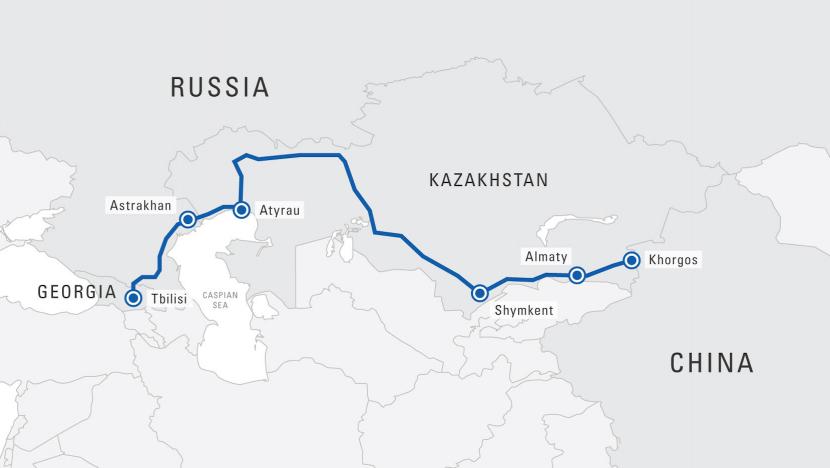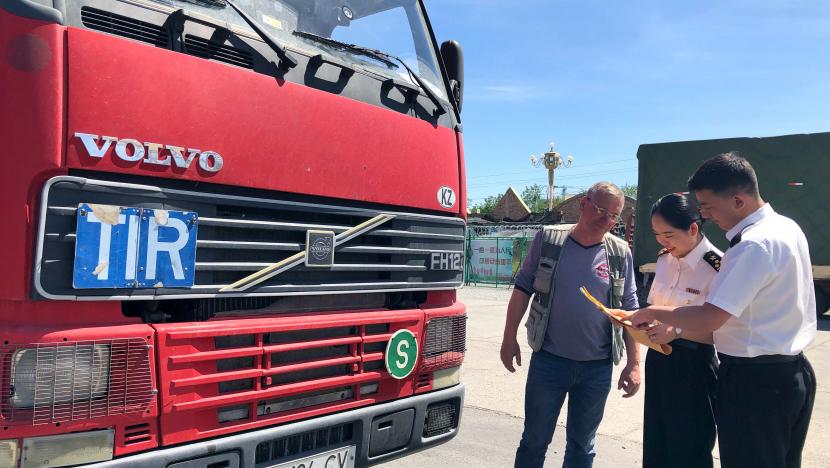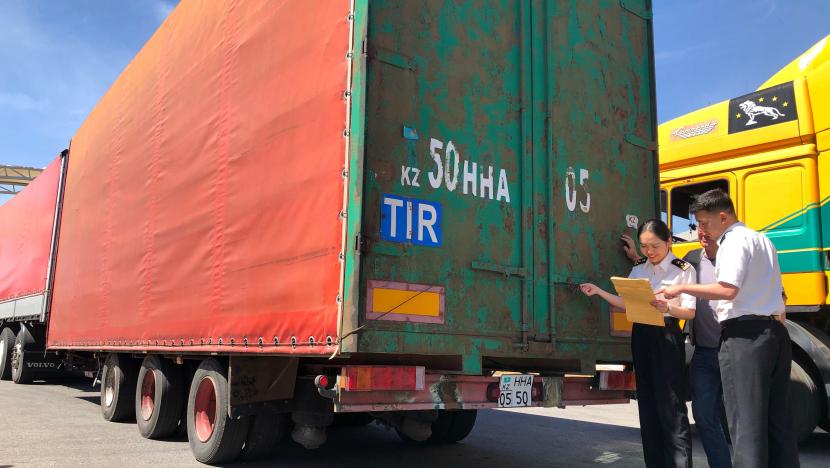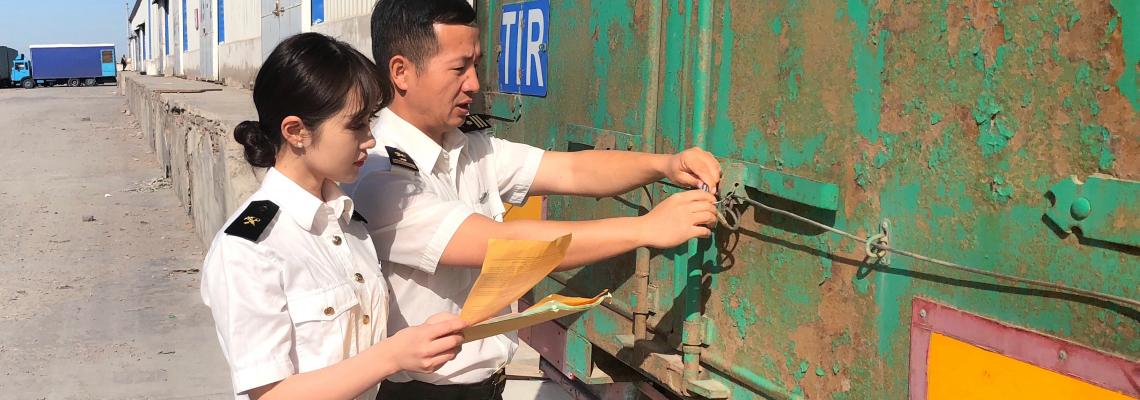The Russian RoutesThe growth of China-Europe rail transit has sparked intense interest as new routes have created new openings for trade set to compete with slower shipping routes. China is predicting 15% annual growth in container volumes exported by rail to Europe every year for the next 10 years. Thus far, growth has largely been driven by generous subsidies for rail routes in China. As European firms find niche export markets in China via rail, volumes are running up against logistical constraints in Russia and Trans-Caspian routes are growing more attractive. China has three primary rail routes linking it to Europe: Russia’s Trans-Siberian Railway from China’s northeast, the Trans-Siberian via Mongolia, and Kazakhstan’s rail system as well as Turkmenistan’s carrying goods to Caspian ports. At that point, goods are shipped across the Caspian to Azerbaijan where they’re then loaded onto the rail network crossing the South Caucasus and into Turkey.
Profitable rates for the Trans-Siberian route stand at $8,000-$9,000 per 20-foot container. It costs $1,000-$2,000 to deliver the same via container ship. China is now mulling pulling its subsidy support covering 40-50% of the cost of shipping via the Trans-Siberian due to a shortage of capacity on the Russian rail network and incredibly slow train speeds. Russia has failed to convince China to commit financing for its modernization plan for the Trans-Siberian and Baikal-Amur Mainline rail routes, and Russia’s Ministry of Transport is leaning towards ceasing Belt and Road cooperation with China unless financing needs are met by Beijing. Russia’s transport ministries and infrastructure sector will likely struggle to win state resources during a time of increasingly strict budget controls from Moscow.
Rail transit volumes through Russia therefore have limited room to grow. Domestic demand for grain, coal, and other essentials strains from a systemic shortage of rolling stock due to poorly conceived regulatory schema. It’s estimated that higher rental costs for rail wagons have taken 200-250 billion rubles ($3.4 billion to $4.3 billion) out of the economy. Depending on market prices for grain and coal in particular, Russian firms see exports as more profitable. The domestic industries and consumers that pay for infrastructure improvements will likely suffer next year due to China’s import needs. China appears to be giving up or else trying to drive an unacceptably hard bargain on large-scale projects and financing.
The Trans-Caspian Route
Though volumes through Russia have grown considerably, the growth outlook is much rosier for China’s Trans-Caspian route. The recent completion of work on the Baku-Tbilisi-Kars (BTK) Railway in the South Caucasus has made rail shipments through Kazakhstan and Turkmenistan much more attractive. Iran’s expanding rail links with the South Caucasus and Central Asia are also set to create trade opportunities. Rail turnover through Kazakhstan to Europe reached 102,000 containers by the start of November. Current plans aim to hit 2 million containers by 2020.
The opening of the BTK will surely help boost transit turnover volumes, but there’s no good means of judging whether 2 million is realistically attainable. Prime Minister Bakytzhan Sagintayev recently spoke at the “Kazakhstan Global Investment Roundtable,” citing hopes to earn as much as $5 billion annually of transit on top of the 2 million container figure. Observers should be skeptical while acknowledging that significant growth is real.
For one, growing transit volumes should first be assessed in terms of China’s export turnover with the South Caucasus and Turkey since the route is multimodal. Even with significant subsidies, the relevant routes Kazakhstan hopes to exploit are most viable for destinations just before or else at the edge of Europe. For example, China has become Turkey’s leading source of imports, worth $2.1 billion for the year at the end of November. As of September, trade with Georgia was worth $640 million for the year with hopes in Tbilisi that this year’s FTA agreement will bring that total to $1 billionannually on average. Work remains to increase turnover between the states along the route.
For another, Kazakhstan is hoping to rely on private investment and public-private partnerships. The move is meant to reduce strains on the budget so that money can be spent elsewhere, particularly as social spending is trending upwards through 2020. Political reforms are beginning to decentralize power slightly and allow technocrats to manage Kazakhstan’s economy, but progress could vanish if president Nazarbayev dies without naming a successor. Now that Nazarbayev is demanding the country’s companies and elites to bring money back from offshore, it’s possible that elites will seek new means to curry favor or else look for tax breaks via investments into specific projects.
The Black Sea and Beyond
Expansions of capacity in Central Asia are needed given the growing strain on Russia’s rail system. Azerbaijan expects the BTK Railway’s initial capacity of 5-6.5 million tons of cargo is expected to grow to 17.5 million tons. Some of that trade will flow into theAnaklia Deep Sea port currently under development on Georgia’s Black Sea coast. Ports in Batumi and Poti are restricted by shallower drafts and are located in the center of urban areas, which limits their ability to handle container traffic. The consortium building Anaklia signed a Memorandum of Cooperation (MoC) with ports in Baku in Azerbaijan and Kuryk in Kazakhstan. Anaklia is set to become a significant hub for the Black Sea container trade. Security remains a concern, as the port is not far from the border of the Russian-backed breakaway republic of Abkhazia.
China Harbor Engineering Company (CHEC) has expressed interest in investing into the Bulgarian ports of Varna and Burgas as reported by party members of GERB, the senior partner in Bulgaria’s governing coalition. The company would create industrial zones that would funnel trade from Chinese firms. But the GERB party – the senior partner of the governing coalition in power – suffered a setback as legislative gamesmanship with the Prime Minister led to speaker Dimitar Glavchev to step down. New developments for Chinese investments have stalled thus far.
Romania and Bulgaria are looking for international investors for two bridge projects over the Danube River and a 200-kilometer motorway linking the Romanian port of Constanta with Varna and Burgas. Chinese companies will certainly take note. Going into next year, there’s talk of listing Portul Constanta – the operator of Constanta’s port – for an IPO next year. With success elsewhere in the region, expect Chinese firms to look for ways to buy in.
Ukraine also provides opportunities for China. CHEC already won a contract in May todredge the approach to Yuzhny port near Odessa. China’s Sinohydro Corporation Ltd. recently won a contract to upgrade the Kyiv-Chop highway. The construction sector is up 23.4% year-on-year as of October, worth $2.3 billion, and China is poised to competitively bid on port and highway projects. Infrastructure investment is needed to make up for economic losses imposed by the loss of the Donbas, Russia’s annexation of Crimea, and to build a foundation for sustained growth. The state of political and economic reforms in Kyiv are the best predictor of sustainability. Unfortunately, the outlook is mixed.
Multimodal Route Outlook for 2018
There is a hard ceiling approaching on China-Europe rail transit via Russia due tobudgetary strain in Russia and a refusal to allow Chinese firms or other concessionaires negotiate terms for projects. Barring significant network upgrades, bottlenecks will hinder growth. The Trans-Caspian route, however, seems to set to keep growing. In reality, the volume of trade it can handle will always be constrained. Large container ships can’t access the Caspian and it makes little sense to build them there. This limits the economies of scale that can be achieved and means that trade will largely be driven by the countries along the route based on the sectors of their economies showing growth. But the BTK railway has made it China’s preferred option for transshipment to Europe.
Historic moment for China-Eurasia trade with first TIR transits
TIR operations – the global customs transit standard – have started at the Chinese-Kazakh border advancing lower cost, faster, and more secure trade flows across Eurasia. The important milestone signals the activation of the new Silk Road overland link from China to Europe.
The passage of this first TIR truck follows the implementation of TIR in China in recent weeks. It is now en route to Georgia, transiting Kazakhstan and Russia. It crossed the Chinese border at Khorgos, one of the biggest dry ports, which is a cornerstone of plans to reactivate the Silk Road as part of China’s Belt and Road initiative.

Next steps will see further TIR transports along this route and expansion to other border-crossing points in the region acting as key trade gateways towards Eurasia and Europe. IRU encourages transport operators to test other routes across the China-Mongolia and China-Kyrgyzstan borders, which are also open for TIR.
Khorgos is the most popular border crossing point between Kazakhstan and China, with robust infrastructure already in place. Carrying commodities, this first transport operation to use TIR along the route is with the Almaty based operator, Khozu-Avto KZ, member of IRU’s association, KAZATO. It will deliver consolidated cargo with consumer goods and automobile parts to Tbilisi.

As part of the Kazakh national Nurly Zhol programme, the Khorgos project is providing a powerful stimulus to the development of Kazakhstan’s transit potential, and will enable the New Silk Road Economic Belt to be established in its entirety.
The first TIR truck operated by the Kazakh transport company successfully passed all checks and procedures at the border, with the electronic data sent to the customs authorities along the route.
Transport is the fastest growing sector in Kazakhstan, with the rapid development of transit traffic on the Europe-China route of particular significance. Situated at the centre of international trade, Kazakhstan is a natural land bridge between these regions.

Contact
Karen Mazzoli
Senior Manager, Media and Communications, IRU
+41-22-918 27 96 (direct)
+41-79-633 89 53 (mobile)
karen.mazzoli@iru.org
Notes
About TIR
The only global customs transit system for moving goods across international borders, TIR “Transports Internationaux Routiers” has been supporting trade and development for more than 60 years, by allowing customs-sealed vehicles and freight containers to transit countries with minimal border checks. It is governed by the United Nations TIR Convention and managed by the world road transport organisation, IRU.
About IRU
IRU is the world road transport organisation, promoting economic growth, prosperity and safety through the sustainable mobility of people and goods. Founded in 1948, IRU has members and activities in more than 100 countries.









